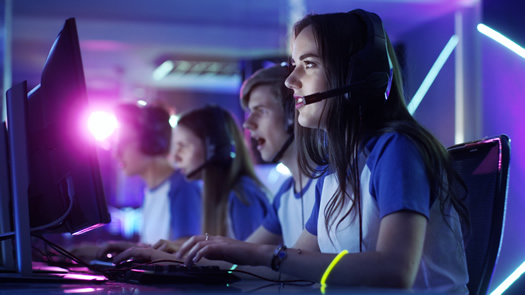Throughout my last two years teaching, I have had a journey that is anything but typical of a teacher, especially one who has been pushing for esports and esports education at not one, but two, different schools and age brackets.
My story begins when I was hired to teach at a brand new high school, Achieve Charter High School of Paradise. In the summer of 2018, I was contacted by the principal of the school asking if I had any interest in esports at the high school level, as I had expressed an interest in gaming during one of my interviews.
Related content: 8 tips to launch an esports program in your district
What followed was a whirlwind of contacts, meetings, and suddenly I was in contact with the Northern California Esports League, which was based out of the Butte County Office of Education and spearheaded by two of the region’s esports leaders, County Superintendent Tim Taylor and Jerry Hight.
Our school opened in August of 2018 with a total of 50 freshmen students, and about 20 of them had a passion or an interest in esports. Before we even had computers or a league to play in, our school had students starting and hosting Super Smash Bros events and competitions using a projector in our school gymnasium.
After some work with the county, I secured a grant for the purchase of six gaming computers for our school, and our brand new school became the first school in all of Butte County to activate with NASEF, the North American Scholastic Esports Federation, and joined its fall Overwatch league.
Our tiny school began competing against schools many times our size from all over the state, and while we did not have victories, what we did have was a group of students of all different ages, backgrounds, and skill levels working together to compete in something that most of them had not even heard of or believed possible.
For many of the students, coming to school for esports practice became the highlight of their week, and became one of the most powerful motivators for them to work on their academics, while still building friendships and camaraderie among their peers.
If the name of our location was familiar to you, it is probably due to the tragedy that was the Camp Fire which devastated the town of Paradise in November of 2018. Our newly-opened and renovated campus was gone, and even through all of the other tragedy and loss, one of the first questions that our students asked was about when we could restart esports, and what had happened to the computers that we had received. Our school reopening went through multiple phases, and we eventually landed in portable classrooms in the neighboring city of Chico, and I set to work trying to revive our esports program.
By January, I had secured six replacement computers through Donors Choose, with the help of the PwC Charitable Foundation and many donors, local and distant. We attempted to start practices again, but without being certain of our future, competitive esports did not pan out. Everything was in a flux in the region, and Achieve Charter High School was forced to close at the end of the 2018-2019 school year. Through all of this, I had developed a passion for esports, and eagerly looked for opportunities to continue with esports at my school location.
I was fortunate enough to stay with the same organization, teaching middle school mathematics for Achieve Charter School. My school provided me with endless support and encouragement for developing esports and esports education at the 6th-8th grade level and allowed me to pursue this with a vengeance. I was given the opportunity to teach an esports elective class and to start a middle school esports team, both of which I was very excited to do.
I ran into a problem right away: there were no middle school esports leagues to play in or join. So the NCEL and I decided to form our own.
My 2019 school year started with me wearing multiple hats in the realm of esports. I had been selected as one of 25 Esports Scholastic Fellows working with the NASEF organization to develop and implement esports curriculum in schools. I was the commissioner of the newly-formed Northern California Esports League’s Middle School division, with five local schools and several distant ones participating. I was also teaching my students about esports with their team and building an esports elective course that I was able to start teaching in January of 2020.
My work with NASEF was incredible, and as one of their scholastic fellows I was able to network with many highly skilled teachers from all over the country as I worked to develop an esports elective course.
Our NCEL Middle School league managed to host what was probably the very first-ever Middle School Esports Invitational in January of 2020. We had five different schools attend, with more than 45 students attending. For a first-of-its kind event in a very rural area, this was a phenomenal success.
Although our season was cut short, my students and fellow educators are passionate about growing this program within our region. We are still planning to continue growing and refining both esports education and our Middle School Esports League in the 2020-2021 school year, and we expect this program to become a fixture of our region.
- High school students say AI will change the workforce - April 18, 2024
- Motivating students using the Self-Determination Theory - April 17, 2024
- Michigan Virtual’s statewide workgroup releasing AI guidance for K-12 educators - April 17, 2024

